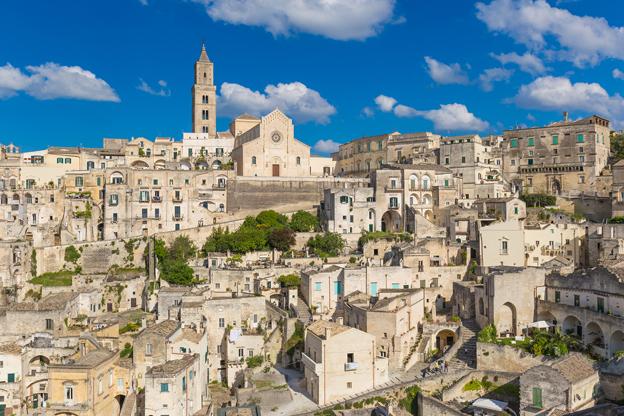For eight centuries, the Cathedral of Santa Maria della Bruna has stood against Matera’s famous Sassi. Rising majestically over Matera’s highest point, the Civita hill, it was built between 1230 and 1270, commissioned by Andrea, bishop of Acerenza, and by the local noble families.
The intent – achieved - was for the church to dominate the entire historic center and be recognizable from all districts within the city and from the surrounding Basilicata countryside.
After being closed for 10 years due to an extensive renovation project, the Cathedral of Matera finally reopened its doors in March, allowing visitors to re-discover the stories carved on the façade made of Matera’s tuff rock, a porous limestone, and the art treasures guarded inside.
The exterior of the church, a perfect example of 13th-century Apulia-style Romanesque, contrasts in its sobriety with the rich Baroque interior, which was remodeled several times, and it is now a triumph of stucco, paintings, sculptures and gilded frames.
The façade, shining after a thorough cleaning, features a rose window which is said to symbolize the wheel of fortune. On the south side of the church is Abraham’s door and the emblem of King Ferdinand I of Aragon, who often visited the city, proof of Matera’s importance in the 15th century. The main door is surmounted by the effigy of the Madonna della Bruna, patron saint of Matera, celebrated every year on July 2 with a procession and fireworks.
Highlights inside the Baroque interior are the Cappella dell’Annunziata, with the 16th-century sculptures of the Annunciation and the Pietà, and the mysterious Cappella del Presepe, with a 14th-century nativity scene sculpted in stone; here, during the renovation works, two chapels with fresco ruins have been found and are now being studied.
Also, when inside, look up to admire the magnificent gilded ceiling, while, to the right of the entrance, do not miss the medieval fresco of the Last Judgment, a surviving fragment of the original painted decorations.

